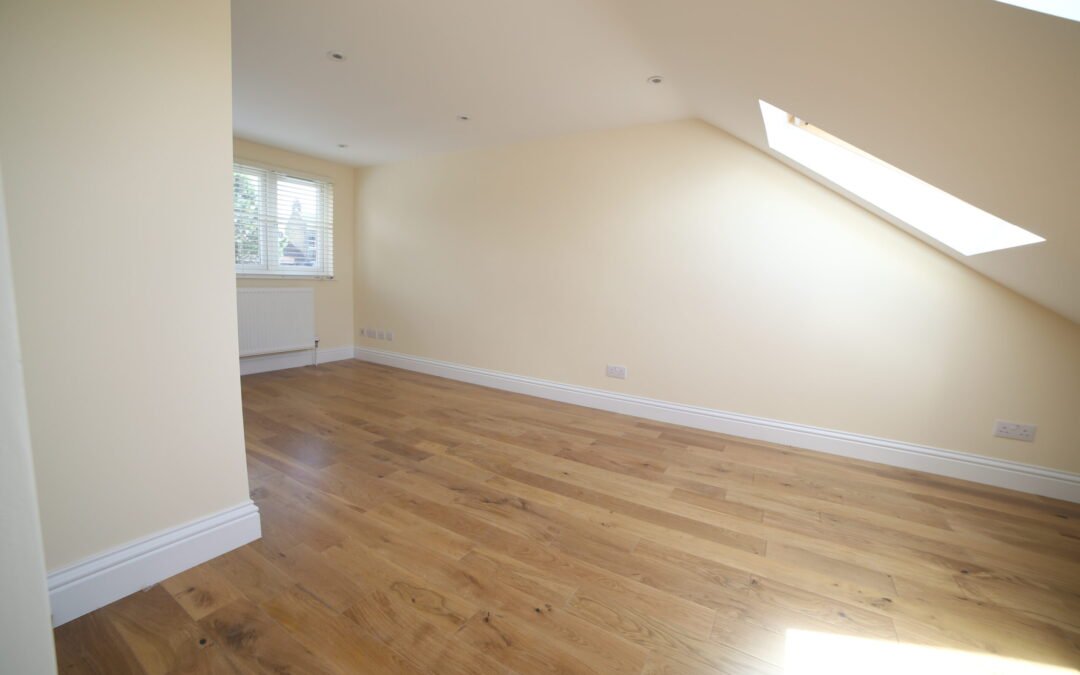There are really five things that your homeowners will want to consider before kicking off on any loft conversion project.
Now the first one and the most obvious one is, to assess whether you able to do a loft conversion on your house because not all houses are suitable. One thing you need to consider for instance, is that you need to achieve a minimum height clearance between the top of the joist in the attic and the underside of the highest part of the loft called the ridge beam (2.4m). Now if it’s too shallow, you can’t have a loft conversion. Additionally there are a few other technical things that would prevent one from having a loft which can only really be assessed through an onsite survey, but for now, 2.4m is the magic number. If you feel so short of this number then all isn’t necessarily lost, but the burger you engineer and architect would need to perform some creative ‘structural gymnastics’ to get the job done.
Thankfully homeowners do not necessarily need planning permission for the conversion any more. It’s fair to say in about 70% of cases especially in London where the housing stock is quite linear very predictable most houses are suitable for what Planners call permitted development, which means that the homeowner can crack on and get their loft converted without having to go through the whole rigmarole of the eight-week planning process with the local authority.
Part of the initial survey of a loft builder coming out to assess whether you can get a loft done is to also, at the same time, to check whether permitted development is the most suitable route for you to get a loft because sometimes it might not be.
The second thing you want to be considering is your budget. All too often we meet homeowners that have been inspired by TV shows like Property Ladder or Property Auction or one of those other Sarah Beany shows which are brilliant, but gloss over the very real anguish going over budget. So it’s important to know how much a loft is going to cost you as accurately as possible before you kick a ball. Now if you’re there or thereabouts on the budget, then absolutely crack on and get it done. But if you’re a few thousand pounds away and you know that towards the end of the job, there may be a risk of running over budget, you don’t want to be in a position where you’ve got fully opened up on loft, open to the elements and you’re unable to actually finish the loft because that would just be horrible. So get your number right from the outset, and go for the honest price over the one that’s just the cheapest, because it will be cheap for a reason.
Kind of off the back of that, point number three that one wants to consider when considering a loft conversion is the trade-off between quality and cost. The two have a mutually exclusive relationship. If a price looks too good to be true, it probably is. A price that looks cheaper in the short run invariably tends to be more expensive in the long run. For example, the flat section of a roof on a loft conversion that actually can be constructed in a number of ways. The cheapest method to lay a felt roof, which generally comes with a lifespan of about 10 years But by spending just a little bit more on a resin roof, which is almost like a fiberglass gluey kind of roof that will actually give you a 25-year lifespan. So you can see the long-term benefits exponentially outstripped the short-term additional cost and that’s where you achieve the economies of scale.
Fourthly, and one of the most important things is, viewers should know what the loft will be used for at the end. So for example if it’s going to be a master bedroom, one of the designer’s top concerns will be where the bed is going to go. Because where that bed’s going to be positioned will then set off a chain of events in terms of loft design. So we design it in such a way so you get the option of additional light switches by the bed so you don’t have to get up and switch the light off if you’re reading or putting additional sockets beside the bed for charging your iPhone, etc. And opposite we could rig the room up with integrated Sky TV so you can have a TV on the wall. That’s just one example. So know what you want the loft to do for you and know what you want the loft to do for your lifestyle. From there…
Fifthly and most importantly of all select the right contractor as they are not all created equal. There are loft conversions specialists who do nothing but lofts, and there are general builders who do all sorts of work around the house from fixing gutters to tiling to loft conversions. If you had a fault with your car engine you would go to a garage to get it fixed. In that garage you’ll also have a panel beater, someone doing the bodywork of a car, but then you’ll have the actual engineer, the mechanic himself. Now both of them work on cars, right? But you wouldn’t want the guy doing the body paneling trying to fix your carburetor. Same thing applies of your loft conversion; a specialist would hand-hold you from the very get-go all the way to the end and take you through the planning, take you through all the pitfalls, at the end giving you a pristine, beautiful loft that enhances you and your family’s life, increases the value of your home, gives you more space, and is all signed off with all the rental paperwork at the end of it.
City Lofts London – award-winning builders
Or call 02088988299 Mon-Fri 9am-5pm
Book a free loft consultation with City Lofts London, we’d love to hear from you. INFO@CITYLOFTSLONDON.COM
[contact-form][contact-field label=’Name’ type=’name’ required=’1’/][contact-field label=’Email’ type=’email’ required=’1’/][contact-field label=’Comment’ type=’textarea’ required=’1’/][/contact-form]
PS stuck for interiors inspiration? Look no further





